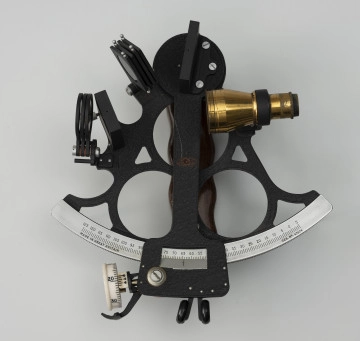
Fishermen marine compass (wet magnetic compass)
1945 — 1950
National Museum in Szczecin
Part of the collection: Navigation history
The wet compass is a navigational instrument for setting the direction of the magnetic meridian. It was invented in China in the 11th century and arrived in Europe in the late 12th century. Compasses are essential tools for determining the location and direction of travel. The compass's working principle is based on setting a freely suspended magnet along a magnetic field. The compass has a magnetic needle mounted on an axis inside a casing, also called a capsule, fitted with an angular scale, the so-called wind rose. We divide compasses into wet and dry-card. With the wet compasses, the capsule is filled with fluid, with the dry ones it is empty. Prior to the introduction of gyroscopic compasses, there were two compasses on a ship: the main compass set on the uppermost superstructure of the navigation platform and the rudder compass right next to the steersman's wheel. The featured exhibit comes from the ŚWI-38 fishing boat, which, along with other pieces of gear, is held in the collection of the National Museum in Szczecin. Leszek Kocela
Author / creator
Object type
compass
Technique
Wyrób fabryczny
Material
metal, factory glass
Origin / acquisition method
purchase
Creation time / dating
Creation / finding place
Owner
Muzeum Narodowe Szczecin
Identification number
Location / status

1945 — 1950
National Museum in Szczecin

1951 — 1975
National Museum in Szczecin

1816 — 1850
National Museum in Szczecin
DISCOVER this TOPIC
Castle Museum in Łańcut
DISCOVER this PATH
Educational path